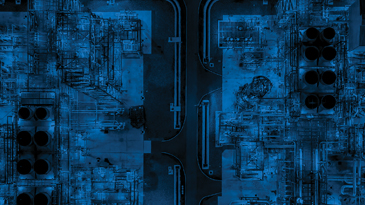Plenty of literature references “remaining useful life” (RUL) as a key metric for predictive maintenance (PdM) applications, one that offers a realistic estimation of how much life is left in an asset until it has to be completely replaced. However, no matter how tantalizing the concept of RUL appears, it is indeed a flawed concept.
People confuse assumptions around RUL, so let’s try to clarify. First, traditional maintenance is organized around statistical assumptions of failure mechanisms, mostly related to normal wear and tear. However, according to the ARC Advisory Group, 82 percent of asset failures are caused by errant process activity, rather than wear or age-related issues.
The ARC assertion is corroborated by many maintenance practitioners. Accordingly, not only does this render most preventive maintenance strategies ineffective in managing equipment downtime and maximizing equipment lifetime, it also suggests that estimates of RUL may be specious.
The Easy Part: Understanding Wear-Based Failures
Wear-based failures are not impossible to predict. Once equipment is broken-in and past the infant mortality stages, only 18 percent of breakdowns (downtime events) are caused by a wear-based failure, where you can clearly see a bathtub curve, with the probability density function ramping up close to “end of life.”
Examples include the filters in your air conditioner or brake pads on your car. Assuming enough data is available, you can calculate quite accurately the mean time between failure (MTBF), mean time to repair (MTTR) and remaining useful life.
The Harder Part: Factoring in the Unpredictable
Random failures do not suffer a wear-based mechanism. As ARC proclaims, 82 percent of breakdown events are caused by random accidental events that cause degradation and damage outside of normal wear and tear.
Examples include an operator entering an incorrect setpoint and driving the asset outside of safety and design limits, a lightning strike causing a voltage spike or an oil change using the wrong oil. The majority are random events, without repeatable probability distribution characteristics, and consequently, a reliable predictable RUL is impossible.
A pump may run for 10 years in a laboratory without damage but break after two years in an oil refinery. The reality means the pump may withstand only about 10 hours of cavitation, but cavitation may occur once a week. Where the MTBF (for normal wear and tear) appears to be two years, in reality, the dominant statistic is mean time between operator errors — and that is indeed random.
In short, these are the implications:
- Predicting the date of a breakdown with great accuracy is possible, but that is inherently different from the RUL.
- RUL is valuable in certain wear-based failures, such as heat exchanger fouling, ethane cracker furnace tubes coking and reactor and catalyst deactivation.
- In total, manufacturing assets experience the sum of wear-based and random (errant) failures. There is no guarantee that damaging random events will not occur, which implies that, in that sum, there are no mechanisms available to actually predict RUL.
To learn more about how companies across industries are using prescriptive analytics to accurately detect equipment failures weeks before they occur, take a look at the recent white paper Low-Touch Machine Learning is Fulfilling the Promise of Asset Performance Management.






Leave A Comment